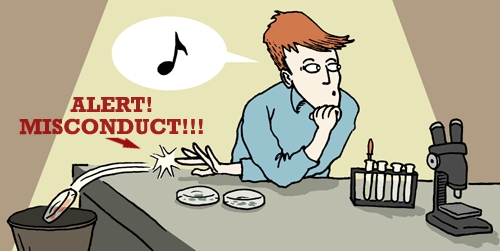2022-08-02 Avoid Research Fraud By Publishing Raw Scientific Data With Labii Electronic Lab Notebook
2022-08-02

Despite the fact that scientific misconduct is a very rare event, it creates a huge waste of time and money, as well as misrepresents research progress. Labii has reports and follows up on a large number of scientific frauds. A good example of this is the Cardiac Stem Cell Research carried out by Dr. Piero Anversa in 2018.
According to a recent science publication, a misdiagnosis of Alzheimer's disease misled scientists for 16 years and wasted 16 billion dollars. In the wake of the discovery of more and more scientific misconduct, we shall all take it seriously.
What happened
A 2006 study authored by Sylvain Lesné, a researcher at the University of Minnesota, revealed several instances of image manipulation. Aβ*56 was identified by the paper as a promising target for early intervention in Alzheimer's disease, and has been cited by more than 2,200 academic papers. Aβ*56 is a beta-amyloid. Observations have shown that beta amyloids clump in the brain, a phenomenon that is believed to contribute to Alzheimer's disease. Different types of these proteins may be targets for Alzheimer's drugs. In January 2022, Vanderbilt University neuroscientist Matthew Schrag informed the NIH about his concerns about the images. A review of Lesné's published work was conducted by two image analysis experts. They expressed the same concerns as Shrag. There were 20 "suspicious papers" authored by Lesné, 10 of which dealt with Aβ*56.
What is the Alzheimer's disease
Alzheimer's disease is the most common type of dementia. Progressively, it causes mild memory loss and may eventually lead to inability to communicate and respond to the environment. There are parts of the brain that control thought, memory, and language that are affected by Alzheimer's disease.
What should we do?
Labii is calling for the publication of the raw scientific data along with the publications. Aside from the scientific findings, the raw data from the research is of great importance for other researchers to replicate the findings. It is ironical that more than 60% of the research conducted in academic laboratories cannot be reproduced by other researchers in the field. It is clear that publishing raw results of research can contribute to an improvement in the reproducibility of experiments.
My belief is that by publishing raw results, we can greatly reduce the incidence of publication fraud, which in turn saves money and creates a clean environment for research to save lives and save dollars. – Yonggan Wu, Founder & CEO of Labii
With the advancement of technology and the widespread use of electronic lab notebooks, publishing scientific raw data has become much easier. Researchers will be able to create a link for their raw research data using Labii. Any publication can include this link so that other researchers can view and examine the raw research data.
To learn more, schedule a meeting with Labii representatives (https://call.skd.labii.com) or create an account (https://www.labii.com/signup/) to try it out yourself.
Last updated